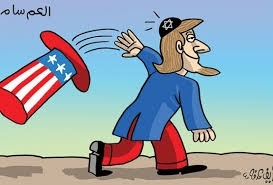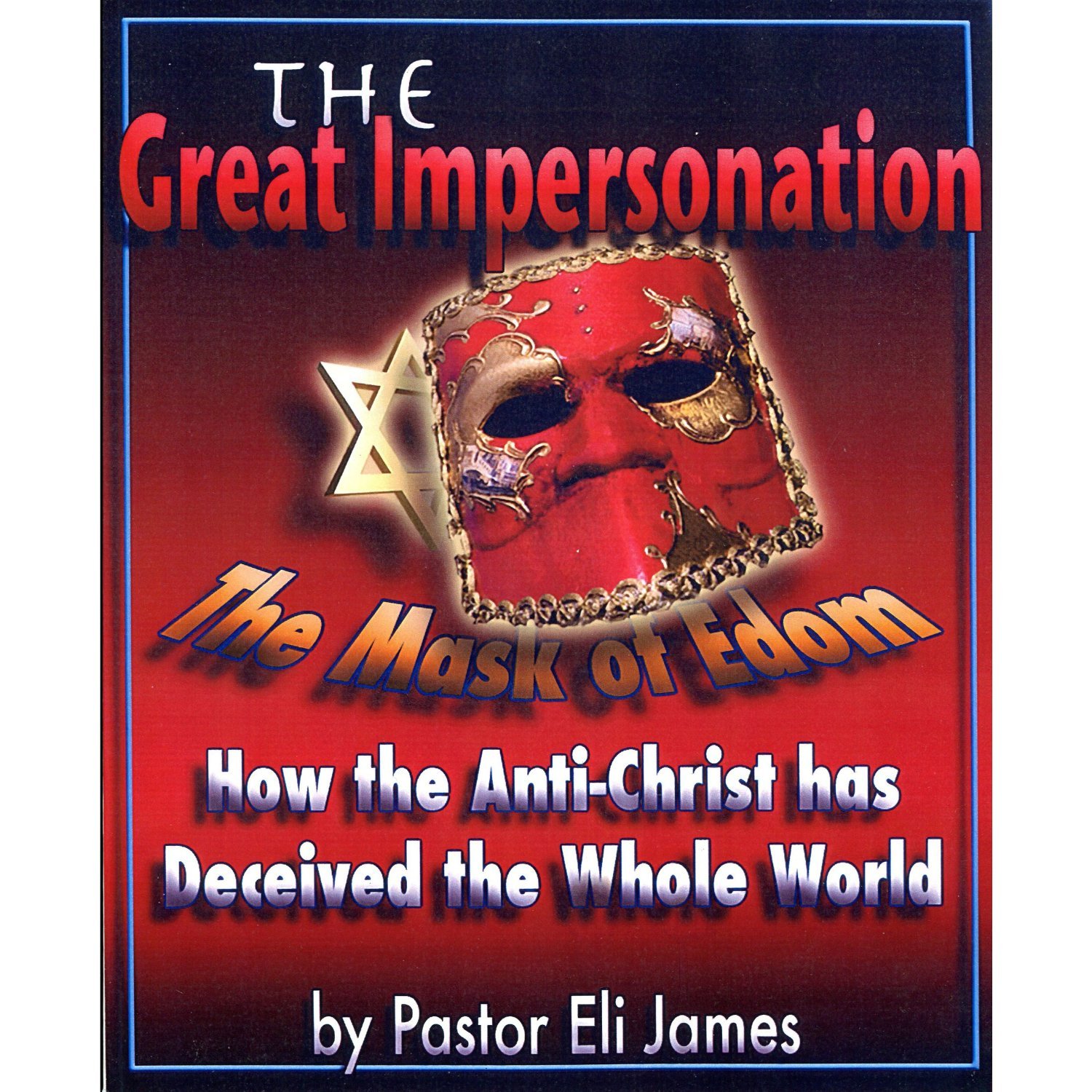The Ten Lost Tribes Versus the Assyrians

“In Isaac (Saxons) Shall Thy Seed Be Called.” – Gen. 21:12. The Israelites were Caucasians. All of the coinage, statuary and other depictions of the Israelites in the Greco-Roman world shows White people exclusively.
Stephen Collins gives an excellent history of the Ten Lost Tribes and the Parthian Judahites. Mr. Collins makes a major mistake in that he falsely identifies the Jews, who are a mongrel people, with the Judahites, who were always pure-blooded Aryan Shemites. This false identification is a major blunder; but his historical research proves, without any doubt, that Caucasian people are the Israelites of the Bible. He also believes that the “days” of Genesis were literal 24-hour days; but careful research sows that the Hebrew word YOWM means EON in Genesis 1 and 2.
The Caucasian people ARE Israel.
More proof:
From Sven Longshanks at the website: https://aryanisrael.wordpress.com/tag/heraldry/
ARYAN ISRAEL
Exposing the true identity of the descendants of Jacob-Israel.
THE GERMANIC TRIBES OF ISRAEL
Ancient Britons and Proto-Celts
Britain gets it’s name from King Brutus, the grandson of King Aeneas, who was the founder of the Roman Empire. Prince Brutus arrived on ‘the great white island’ with a large group of his fellow Trojans escaping the devastation of Troy, and was recognised and welcomed by three tribes of his Aryan Shemitic brethren that were already here, and who proceeded to proclaim him King of the entire island. Brutus founded the city of Caer Troia (New Troy) on the Thames, which later became known as ‘Londinium’ by the Romans. The Welsh Bruts give the date as being when the Philistines of the Old Testament held the ark of the Covenant in captivity and whenBeli was the high priest of Judah, both of which are mentioned in the Book of 1 Samuel. A commemorative stone of where he first set foot on the island has stood at Totnes in Devon since 1100BC. These people became known as the Ancient Britons and would later be absorbed into the Celts, Gauls and Saxons who also have their origins in the tribes of Jacob-Israel.
Previous to King Brutus arriving in Britain, his ancestor King Cecrops(Calcol/Calchol) had begun the Irish dynasty of Kings at Ulster around 1700BC. He also founded Athens and was at the head of all the kingly lines in Europe, owing to him being one of the sons of Zarah, who was the son of Judah, the patriarch of the same tribe from which King David and Jesus the Christ were descended. He was almost as wise as Solomon according to the biblical record, and had a brother called Darda (also known as Dardanus and Dara) who founded Troy and whose descendants ruled there until the destruction of it, when the last son of the Kingly line and grandfather of King Brutus, King Aeneas, married the daughter of Latinus and started off the Roman empire. King Cecrops, the ancestor of all today’s Kingly bloodlines was said to have left Egypt before the famous exodus and we have records of his descendants spreading west along the Mediterranean, leaving clearly Hebrew names to the places they colonised, like the Ebro valley, the river Iber and Saragossa (stronghold of Zarah) in Spain. They became known to history as the Iberians and also gave their name to Ireland, first being Iberne, then Erne, then latinised to Hibernia.
Later, there was another wave of Hebrew colonists escaping the Egyptian tyranny. The classical writers and historians Heraceteus of Abdere 600BC, Dioderus Siculis 50BC, Euripedes 440BC and Strabo 44BC, all make reference to large groups of Hebrew settlers leaving Egypt just before Moses led the remainder away in the Exodus. They were from the tribe of Dan and settled Argos, the oldest city in Greece and became known as the Danaii, eventually being forced from there and ending up in Ireland as the Tuattha de Danaan.
The Bible just records the exploits of the Israelites who settled in the Levant, but there is a wealth of evidence elsewhere to show that the Trojans, Spartans, Dorians, Lacedaemonians, Achaeans, Minoans and Danaans all descended from the common root of Shem, son of Noah, through the tribe whom God made his covenant with, the House of Isaac.
There were many promises given to Abraham and his son Isaac in the Old Testament and there is only one group of people today that these promises have have come true for. Likewise there are many prophecies that have only come true for one particular group of nations. Apostate church history would have us believe that ten of the tribes of Israel just disappeared from history, mingling into the heathen tribes around them. Yet there is plenty of proof that they survived, fulfilled the prophesies and gained the fruit of God’s promise as today’s nations of Europe.
The Dispersion and Evolution of the Tribes
Round about 740BC the Assyrian King Sargon II invaded the reclaimed land of Canaan that had been rightfully settled by the Israelite tribes, defeating them and transporting the tribes from there to different parts of the Assyrian empire, mainly to the east under the Caspian Sea, and to the north west of Nineveh. This was God’s punishment of the reprobate tribes of Israel, who had refused to keep themselves separate from the ways and peoples that surrounded them. It was Assyrian practice to place their captives on the edges of the empire to act as a buffer zone against invaders. They had freedom of movement, but had to pay tribute and were not allowed to make their own laws. Later, around 600BC the Babylonians burnt Jerusalem to the ground and took the last remaining people of the tribes of Judah and Benjamin to Babylon, where they stayed in captivity until King Cyrus released them around 540BC. These two tribes were able to recover some of their history at that time and it is through them and those culturally descended from them, that the Bible was preserved for us today. However the other ten tribes have a completely different history after their captivity and they never returned to Palestine.
We know the tribes of Israel by the name ‘Israelites’ from the Bible, but it is unlikely that was the name that they called themselves by, and even more unlikely that it was the name other peoples called them. The Assyrians knew them by the name of their king ‘Omri’ and called them the Khomri or Ghomri. After about 705BC that name doesn’t get mentioned again in the records, but instead a new name appears, the Gimira or Gamera, recorded in Assyrian letters of the time as a people living in the exact area that the Old Testament says the Israelites had been placed in, near the beginning of the Euphrates.
This group took council and decided to cross the river and search for a new land in which to dwell, as told in 2 Esdras ch 13 v 39 – 45. About this time we first hear ofthe Cimmerians being mentioned by Strabo as also being in the same place that 2 Esdras records the Israelites as being in. Strabo tells us that these Cimmerians (Khomri – Gimira – Cimmerian) crossed the river and went on to invade Phrygia and Lydia (modern Greece) until they were pushed further westward by the Scythians around 525BC.
These Scythian tribes also had their origin in Israel. They were the Israelites that were placed to the east under the Caspian sea and were called ‘Iskuza’ by the Assyrians (derived from Isaaca) Saka/Sakka by the Persians and Shutae by the Greeks. They spread from east to west under the Caspian sea, pushing their Cimmerian brothers further west into Europe, while at the same time moving east into India, becoming known to history as Western Scythians and Eastern Scythians. The eastern branch travelled as far as China and introduced Buddhism to them. Some of the titles for Guatama Buddha showed his Scythian heritage, such as Sakyashina – lion of the tribe of Sakya, Sakyamuni – Sakya sage, Sugata – Happy One and Sakya – the teacher. The western Scythians travelled through the Caucasus mountains into Europe where they occupied south Russia. They became known as the Massagetae – the great Sakka horde, or just Sakka.
Migration of the tribes at the time of Moses and up to the Assyrian dispersion in green, after that in red.
As The Cimmerians moved west they became known as Celts by the Greeks andGauls by the Romans. They followed the Danube river (named after the tribe of Dan in the previous dispersion at the time of Moses), leaving burial mounds behind them in the same manner as the Scythian ones, filled with swords, ornaments, animals and even servants/slaves. This is known as the Hallstatt culture today and we can still see our link to them in the traces left behind of the settlements they built, which were in a similar style to our modern rural ones. By 300BC Europe was full of Celts and Gauls and some invaded Rome while others pushed back east. The eastern ones founded ‘Galatia’ and became the Galatians whom Saint Paul wrote his epistle to, while the western ones repeatedly attacked Rome.
As the Scythians made their way further west from the land that had by now been named after them, they became known as Germani, or genuine, to differentiate them from a Japhetite tribe called the Sarmatians that were now occupying their previous homeland. Some of these German tribes became known as Angles and Saxons and pushed across the channel into Britain, where they found people just like them from the earlier migrations. Other tribes colonised Scandinavia, tracing their kingly line from Odin in 200AD, whose genealogy also takes us back to the tribe of Judah and the House of Isaac.
Sharing similar language and having a similar culture, these various tribes were able to soon assimilate after first fighting one another – intermarrying and forming ties to the land, building rural farming communities and instituting the rule of Law. The language they spoke was Paleo-Hebrew and this can clearly be seen when comparing Hebrew words to modern English and ancient Welsh.
Some similar words in English and Hebrew are : cipher – saphar, sake – sakan, sore – tsur, sorrow – tsarar, puke – pook, chill – chil, ahah – ahah, mellow – mello, direct – derek, call – kol,room – rum,suck – suk, sum – sum, in – in, nod – nud, harass – haras, no – no, nag – naga, yes – yesh, push – poosh, oath – oth, bad – bad, pass – pasa, shut – shut, mirror – marah, hug – ug, bore – baar, broth – baroth, bath – bath, and crash – garash. The word ‘British’ itself, translates as brit – covenant and ish – man. So British means man of the covenant.
Some similar words in Welsh and Hebrew are: anafu – anaf, annos – anas, annwn – annan, afange – aphang, bara – barah, bu – bou, boten – betten, bedd – beth, breg – berek, bwth – buth, camel – gamel, cas – cass, catt – kat, cal lach – celach, cell – cele, coler – kolar, coron – keren, dagr – daker, and darfod – arvod.
Christian Britain
Understanding who we are is key to finding the truth out about history and the relevance Christianity has to it. All the blessings and curses for the Israelites in the Bible apply to us. Our oldest law systems were derived from the original laws we used to follow that were passed down from Adam through Seth, Noah, Shem and Abraham and on to Moses. The ancient laws that Alfred the Great recorded in 890AD are the same laws that the Biblical Israelites kept and his laws are acknowledged as having the same source as the Brehon laws of Ireland and Scotland.
Our nations are much like individual people, forgetting their childhood in the mists of time and fighting among one another like brothers do. Christianity reminded us of our history and our unique place among the tribes of the world. The remnant that was saved from the ten tribes of Israel and dispersed into the lands of the Gentiles(nations) went on to become the great nations of Europe. Saint Paul’s epistles were written to them, to the Galatians (Celts), to the Corinthians and Ephesians (Greeks), to the Hebrews (Europeans who had remembered who they were), and to the Romans. In the epistle to the Romans Saint Paul makes explicit reference to the Romans being the wild olives that through Christ will be grafted back onto the tree, the tree being Israel. He is identifying the Romans as being descended from Jacob Israel and fulfilling the promises made to him about his posterity. He makes it clear that all that Rome achieved was through them being these wild olives and that now is the time of their fullness.
The first church building above ground was built by Joseph of Aramathea in Glastonbury Britain, and both Gildas and Saint John Chrysostom record this as being in 36AD. Romans ch 1 v 16 tells us that the gospel went first to the Judahites and then to the Greeks, meaning the small amount of Judahites left in Jerusalem and the entire country of them residing in Britain. The Antiquities of Glastonbury also confirm that Joseph was commissioned by the Apostle Philip to bring the faith to Britain in the reign of Tiberius. There were Anchorites/Hermits here at that time that they joined up with, who lived an ascetic lifestyle similar to the Brahmins of the ancient Aryan Hindu culture. The Bishop of Rome that gets spoken of then was actually the Bishop of the British church at Rome. The first pope was British and this probably played a large part in Emperor Claudius edict to exterminate Britain in 43AD. Archbishop Ussher also tells us that the first nation to proclaim themselves Christian were the British in 156AD, a long time before the Roman empire adopted and distorted it.
After the Romans were finally expelled for good around 400AD, the Angles and the Saxons invaded Britain pushing the Celtic Church west, concentrating it in Wales and Ireland where they held out until the Anglo Saxons had settled down and started building communities, before heading back into Albion with their genealogies and manuscripts, converting them all to the orthodox faith.
The country wasn’t finally united as one again like in Brutus’ day until the Sainted King, Alfred the Great succeeded in repelling the Viking hordes in 880AD. All this time Britain was Anglo-Orthodox and it wasn’t until 1066 and the invasion of William ‘The Bastard‘ Usurper that the faith was forcibly changed to that of apostate Rome. Since Roman Catholicism is a universalist creed and sought to gain primary rights as the first church, much of Britain’s early recorded Christian history was burnt or destroyed in The Bastard’s invasion and after. However traces of our Israelite heritage can still be found; in the original dedication in the King James Bible it makes reference to England being Sion and in the 1933 version it has maps at the back showing where the sons of Shem settled. There is also the reference to the covenant between God and man claimed by the nation of Ireland in the Irish constitution, and of course there is our heraldry, which has its origin in symbolised prophecies for the twelve tribes of Israel as given by Jacob-Israel to his sons. The basic heraldry of the nations and families of Europe is identical to those of ancient Israel as outlined in the Bible.
It saddens me to hear British people disregarding and defaming the Bible. It is like seeing someone urinating on their fathers grave. There is a lot more to it than the apostate church would have us believe and the people it was all written and recorded for are the European people. Christianity is our heritage, not Judeo-Christianity, and our relatively comfortable place in the world today is not through our own actions but through God’s promise to our fathers and his covenant with us. If we obey his law, which is just the natural order codified, we will prosper. If we go against it, then we will suffer, as we see happening all around us now.
I am indebted to ‘Missing Links Discovered In Assyrian Tablets’ by E Raymond Capt (M.A., A.I.A., F.S.A Scot) and for his in-depth investigations into much of the above evidence.





